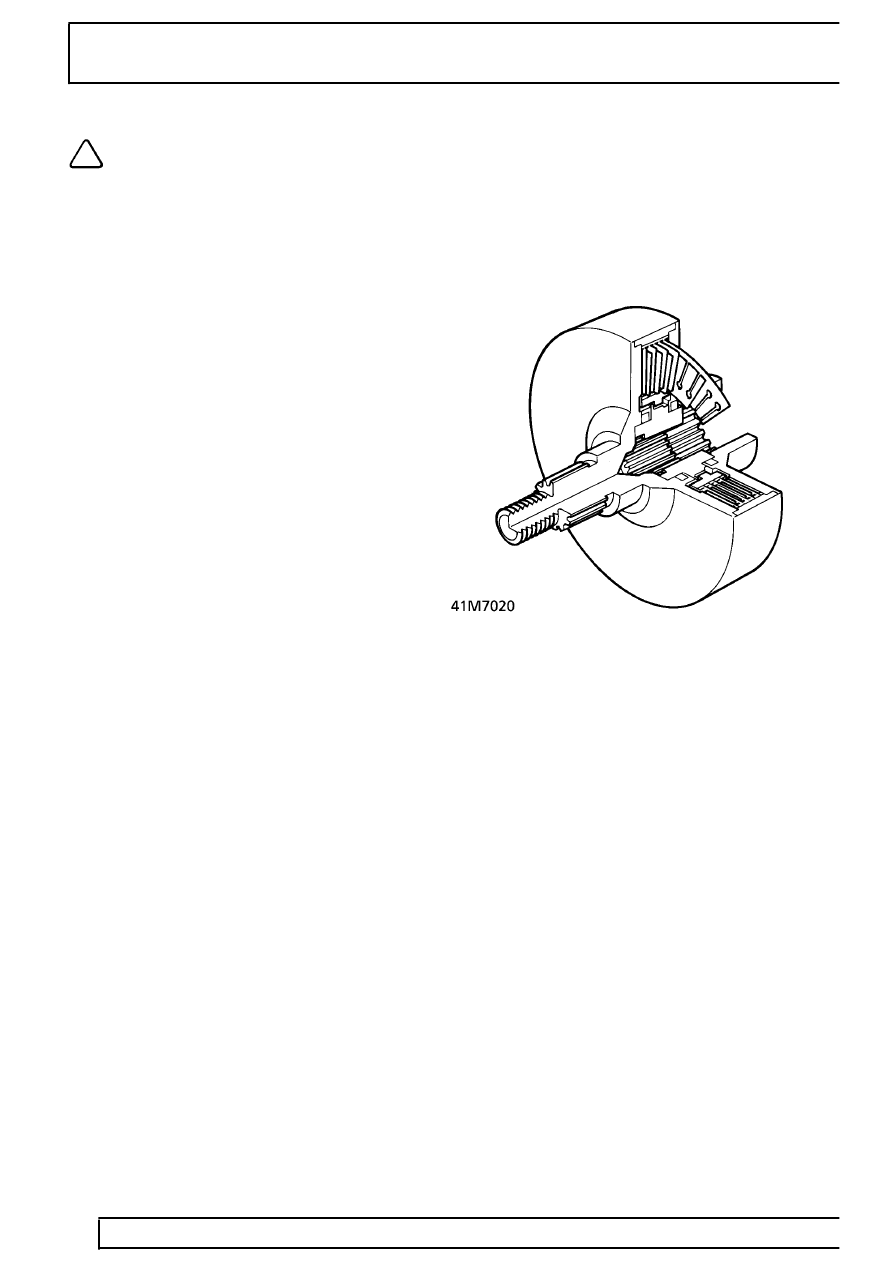Range Rover P38

41
TRANSFER BOX
NEW RANGE ROVER
6
DESCRIPTION AND OPERATION
NOTE: For a detailed description of the
transfer gearbox refer to the Borg Warner
Overhaul Manual.
The transfer box comprises:
- a front and rear casing
- an epicyclic gear set
- a viscous coupling
- a differential unit
- a ratio control motor
- a lubrication pump.
The epicyclic gear set is located in the front casing
and comprises a sun gear and four planet gears. The
sun gear receives the drive from the gearbox output
shaft and transfers the drive directly to a reduction
hub. The reduction hub is located on a splined
intermediate shaft which rotates at the same speed.
The reduction hub is moved along the intermediate
shaft by the selector spool and the ratio control motor
to one of three positions; high, low and neutral.
In the high position, the reduction hub is driven
directly from the sun gear and rotates the intermediate
shaft at the same speed as the gearbox output shaft.
In the low position, the reduction hub is engaged with
the planet carrier and rotates at a lower speed than
the gearbox output shaft.
In the neutral position, the reduction hub is not
engaged with either the sun gear or the planet carrier
and no drive is passed from the gearbox output shaft
to the intermediate shaft.
Differential unit
Drive from the intermediate shaft is transferred by a
morse chain to the differential unit. The differential unit
comprises sun and planet gears. The rear output
passes through the differential unit sun gear shaft and
engages with the planet carrier. The splined forward
end of the rear output shaft provides location for the
viscous coupling unit inner spline. The outer diameter
of the sun gear shaft engages with the outer splines of
the viscous coupling unit.
Viscous coupling unit
The viscous coupling operates in conjunction with the
differential unit to control the proportion of drive torque
transferred to the front and rear drive shafts. The
viscous coupling is a sealed unit filled with a silicon
jelly which surrounds discs within the unit. The silicon
jelly has properties which increase its viscosity and
resistance to flow when agitated and heated.
During normal driving conditions, slight variations in
the relative speed of each drive shaft is insufficient to
increase the viscosity of the silicon jelly. Therefore the
resistance within the viscous coupling is low.
In off-road conditions, when the wheels lose grip on
loose or muddy surfaces, a greater difference in the
rotational speeds of the front and rear drive shafts
exists. The slippage, due to the difference in rotational
speeds of the drive shafts, within the viscous coupling
agitates the silicon jelly causing heat which increases
the viscosity. The increased viscosity increases the
drag between the discs forcing both sets of discs to
rotate at similar speeds, reducing axle slippage and
increasing traction. The viscous coupling removes the
need for a manually controlled differential lock.
